May 30, 2023
Welcome to the world of pressure cookers, where time meets flavour!
In this blog post, we'll dive into the wonders of pressure cooking and equip you with valuable tips to make the most of your pressure cooker.
Whether you're a beginner or a seasoned cook, these tips, recipes, and frequently asked questions will help you master the art of pressure cooking.
So, let's get started on this deliciously efficient journey!

A pressure cooker is a versatile kitchen appliance that uses steam and pressure to cook food quickly and efficiently.
It consists of a sturdy pot with a tightly sealed lid and a pressure release valve.
When heat is applied to the pot, the liquid inside turns into steam, building pressure and raising the boiling point.
This high pressure and temperature result in faster cooking times and better flavour infusion.
Pressure cooking offers a multitude of benefits.
Firstly, it reduces cooking time by up to 70%, making it a time-saving option for busy individuals and families.
Secondly, pressure cookers lock in nutrients and flavours, making your meals more nutritious and flavorful. Tough cuts of meat become tender and succulent, and vegetables retain their vibrant colours and natural taste.
Additionally, pressure cooking is a great energy-efficient cooking method, as it requires less time and heat compared to traditional cooking methods.
Modern pressure cookers have safety features that ensure hassle-free and secure cooking.
These features include a locking mechanism that prevents opening the lid when there is pressure inside, a pressure release valve that allows controlled release of steam, and a pressure indicator that indicates when it's safe to open the cooker.
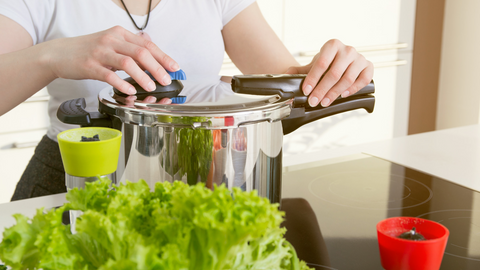
Familiarize yourself with the specific model you own.
Read the instruction manual to understand its features, functions, and safety precautions. This knowledge will help you make the most of your pressure cooker.
Before starting the cooking process, ensure that the lid is properly sealed.
Align the arrows on the lid and pot, and twist the lid to lock it securely. A proper seal is crucial to maintain pressure during cooking.
Pressure cookers cook food faster than traditional methods.
Be mindful of cooking times and adjust them accordingly. Follow recipe instructions or refer to pressure cooking time charts to ensure optimal results.
Pressure cookers require a minimum amount of liquid to create steam and build pressure. Follow recipe guidelines for the recommended liquid quantity. Generally, one cup of liquid is sufficient for most recipes.
There are two methods to release pressure: natural release and quick release.
Natural release involves letting the pressure reduce naturally over time.
Quick release involves carefully venting the steam using the pressure release valve.
Refer to the recipe to determine which method is suitable.
Before you start pressure cooking, prepare and measure your ingredients.
Chop vegetables, trim meats, and gather spices. This preparation will save you time during the cooking process.
To prevent clogging the steam valve, avoid overfilling the pressure cooker.
Leave enough headspace in the pot for ingredients to expand during cooking. Follow the recommended maximum fill line provided by the manufacturer.
After browning meat or sautéing ingredients, deglaze the pot by adding a splash of liquid and scraping off any stuck bits from the bottom.
This prevents burning and ensures optimal flavour in your dish.
The trivet, a raised platform inside the pressure cooker, is useful for elevating delicate ingredients above the cooking liquid.
It's also handy for cooking multiple items simultaneously, such as steaming vegetables while cooking meat.
After each use, clean your pressure cooker thoroughly according to the manufacturer's instructions.
Regularly check and replace rubber gaskets, as they can wear out over time.
Proper cleaning and maintenance will extend the lifespan of your pressure cooker
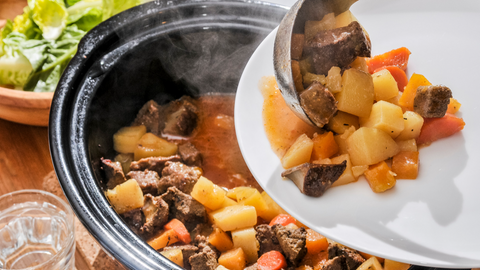
Experience ultimate comfort with this tender beef stew cooked to perfection in your pressure cooker.
Start by browning seasoned beef cubes in the cooker to enhance the flavour.
Add onions, carrots, potatoes, garlic, and your choice of herbs. Pour in beef broth and a splash of red wine for depth.
Set the pressure cooker to high pressure and let it work its magic for around 30 minutes.
The result is a rich and hearty stew that will warm your soul on chilly evenings.
Indulge in a creamy and luxurious risotto without the constant stirring.
In your pressure cooker, sauté onions, garlic, and sliced mushrooms until golden and fragrant. Add Arborio rice, chicken broth, and a touch of white wine for complexity.
Seal the lid and cook on high pressure for about 7 minutes.
Release the pressure and stir in grated Parmesan cheese, butter, and fresh herbs.
The result is a velvety risotto with perfectly cooked rice and a delightful burst of flavour.
Get your taste buds dancing with a flavorful and satisfying chilli con carne made effortlessly in your pressure cooker.
Start by browning ground beef with onions and garlic. Add kidney beans, diced tomatoes, tomato paste, and a medley of spices like chilli powder, cumin, and paprika.
Set the pressure cooker to high pressure and let it cook for 15 minutes.
The result is a thick and hearty chilli infused with smoky, spicy, and savoury flavours.
Serve it with a dollop of sour cream, shredded cheese, and a sprinkle of fresh cilantro.

Satisfy your pasta cravings in no time with this speedy spaghetti bolognese cooked in your pressure cooker.
Start by sautéing onions, garlic, and ground beef until browned. Add tomato sauce, diced tomatoes, Italian herbs, and a pinch of sugar for balance.
Seal the pressure cooker and cook on high pressure for 5 minutes.
Release the pressure and stir in the cooked spaghetti.
The result is a rich and flavorful bolognese sauce that coats the pasta perfectly, ensuring a delightful and effortless meal.
Enjoy a velvety smooth butternut squash soup that's ready in a fraction of the time with your pressure cooker.
Sauté onions, garlic, and cubed butternut squash until slightly caramelized. Add vegetable broth, a dash of nutmeg, and a sprig of thyme.
Set the pressure cooker to high pressure for 10 minutes.
Once the pressure is released, use an immersion blender to puree the soup until silky smooth. Finish with a swirl of cream, a sprinkle of freshly ground black pepper, and a garnish of toasted pumpkin seeds.
Indulge in tender and mouthwatering pulled pork that falls apart effortlessly.
Start by searing a pork shoulder in your pressure cooker to lock in the flavours. Add a mixture of barbecue sauce, apple cider vinegar, brown sugar, and spices like paprika, garlic powder, and onion powder.
Seal the lid and cook on high pressure for about 90 minutes.
Once cooked, shred the pork using two forks and mix it with the flavorful sauce.
Serve the pulled pork on buns with tangy coleslaw for a crowd-pleasing sandwich.
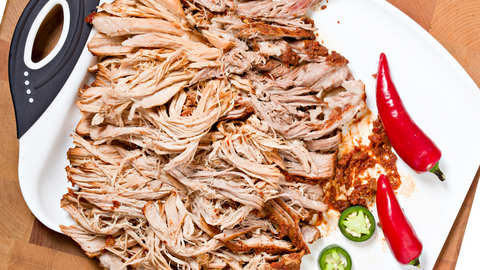
Transport your taste buds to India with this quick and easy chicken curry prepared in your pressure cooker.
Sauté onions, garlic, and ginger in your pressure cooker until aromatic. Add boneless chicken pieces, curry powder, cumin, turmeric, and garam masala for a burst of flavour.
Pour in coconut milk and tomato puree to create a creamy and luscious curry base.
Seal the pressure cooker and cook on high pressure for 8 minutes.
Release the pressure and finish with a squeeze of fresh lemon juice and a handful of chopped cilantro.
Serve the fragrant chicken curry with steamed rice or warm naan bread for a satisfying meal.
Whip up a nutritious and comforting lentil soup with your pressure cooker.
Start by sautéing onions, carrots, and celery until softened. Add rinsed lentils, diced tomatoes, vegetable broth, and a blend of spices like cumin, coriander, and smoked paprika.
Seal the lid and cook on high pressure for 12 minutes.
Release the pressure and garnish with a squeeze of lemon juice and freshly chopped parsley. This hearty lentil soup is a satisfying option for a wholesome lunch or dinner.
Elevate your vegetable game with perfectly steamed artichokes made in your pressure cooker. Trim the artichokes and remove the tough outer leaves. Place them on the trivet inside the pressure cooker and add water, lemon juice, and a sprinkle of salt.
Seal the lid and cook on high pressure for about 10 minutes.
Quickly release the pressure and serve the tender artichokes with melted butter or a tangy aioli sauce.
These steamed artichokes make a delightful appetizer or a side dish for a special meal.
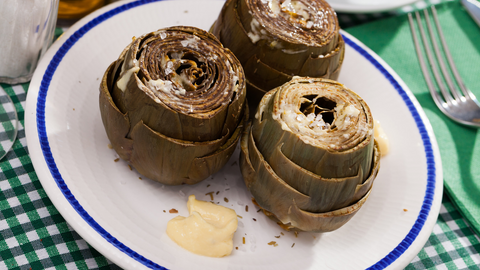
Finish off your pressure cooking adventure with a decadent chocolate lava cake that will satisfy any sweet tooth.
In a mixing bowl, whisk together flour, cocoa powder, sugar, baking powder, and a pinch of salt. Pour in milk, melted butter, and vanilla extract to create a smooth batter.
Divide the batter into ramekins and place them on the trivet inside the pressure cooker.
Add water to the bottom of the cooker, seal the lid, and cook on high pressure for 8 minutes.
Release the pressure and carefully remove the ramekins.
Serve the warm chocolate lava cakes with a dusting of powdered sugar and a scoop of vanilla ice cream for pure indulgence.
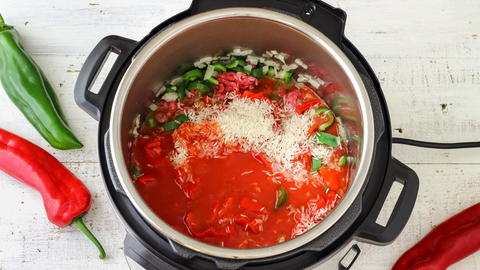
Yes, pressure cooking is safe when proper precautions are followed.
Modern pressure cookers are equipped with safety features, such as locking mechanisms and pressure release valves, to prevent accidents. Always read and follow the manufacturer's instructions for safe usage.
Absolutely! Most recipes can be adapted for pressure cooking.
Adjust cooking times and liquid amounts accordingly. You may also need to make minor modifications to cooking techniques to suit the pressure cooker.
Refer to the manufacturer's instructions for specific cleaning guidelines.
In general, pressure cooker lids and pots can be washed with warm, soapy water. Removable parts, such as gaskets and valves, should be cleaned separately.
Ensure all components are thoroughly dried before reassembling.
Yes, certain pressure cookers are suitable for canning.
However, it's important to use a pressure canner specifically designed for that purpose.
Regular pressure cookers may not maintain the necessary pressure for safe canning.
Feel free to get creative and make substitutions when necessary.
If a particular ingredient is unavailable, look for similar alternatives in terms of flavour and texture.
For example, if a recipe calls for a specific type of vegetable, you can often substitute it with a similar vegetable that you have on hand.
Remember to adjust cooking times as needed, as different ingredients may require slight modifications.
No, it is crucial to wait until the pressure has been fully released before opening the pressure cooker.
Opening the cooker prematurely can lead to steam burns or other safety risks.
Follow the instructions for releasing pressure based on the natural release or quick-release method recommended for your specific recipe.
Yes, pressure cookers are excellent for cooking frozen ingredients.
However, keep in mind that the cooking time may need to be adjusted slightly. Thicker frozen ingredients may take longer to cook, so be sure to check for doneness before serving.
While pressure cookers are primarily designed for cooking under pressure, certain models may have baking or cake-specific functions.
However, baking in a pressure cooker can yield different results compared to a conventional oven.
It's best to follow recipes specifically designed for pressure cooker baking or opt for traditional baking methods for desired outcomes.
No, it is not safe to open the pressure cooker while it's under pressure.
Doing so can release scalding steam and cause accidents.
Wait until the pressure has been fully released according to the recipe instructions before opening the cooker.
Since pressure cooking intensifies flavours, it's important to season your dishes well.
Taste and adjust the seasoning at the end of the cooking process to ensure a well-balanced and flavorful outcome.
Adding herbs, spices, and acidic ingredients like lemon juice or vinegar can also enhance the overall taste profile of your pressure-cooked dishes.
Experiment with different flavour combinations to find what suits your palate best.
Comments will be approved before showing up.
August 14, 2024
January 10, 2024
July 03, 2023

